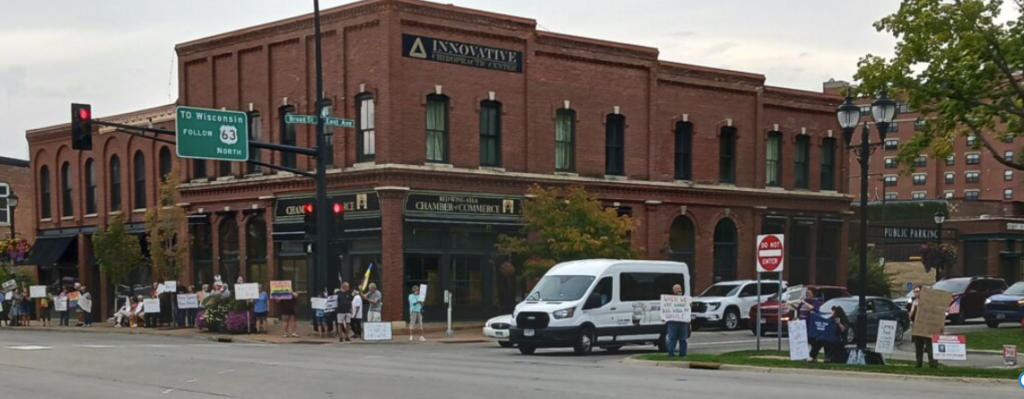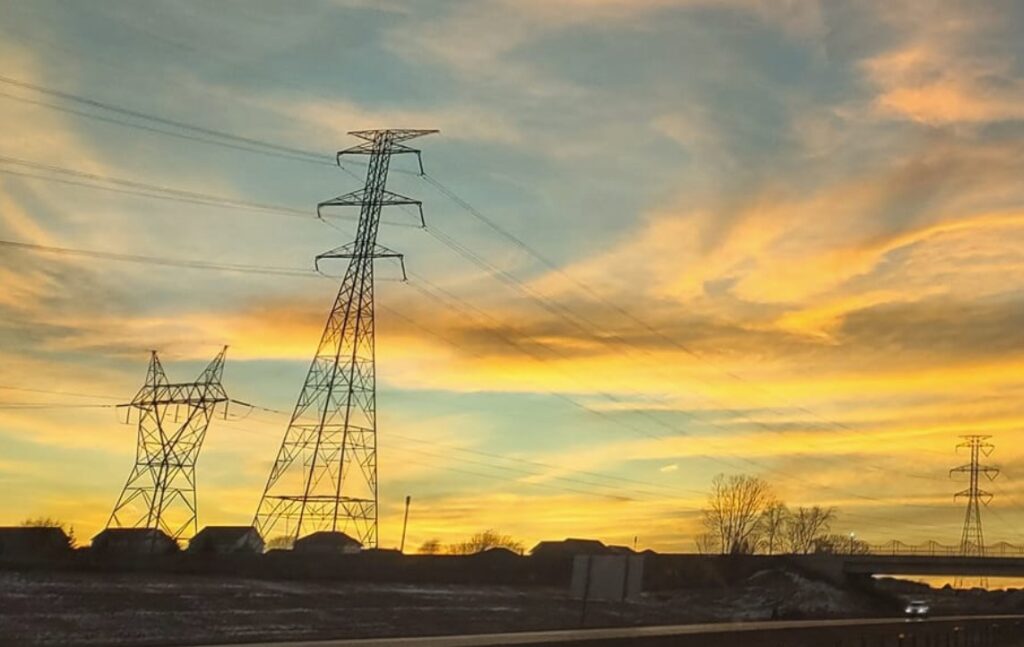FERC EL25-109 – Gov. Walz avoids the issue
September 18th, 2025
Here’s the letter our Gov. Walz filed in FERC docket 25EL-109, the Complaint against MISO brought by five state utility Commissions, North Dakota, Montana, Arkansas, Mississippi, and Louisiana. Details below Walz’ letter.
To look up the whole docket, which is MOST interesting, as everyone in the world has intervened and is commenting, go HERE: https://elibrary.ferc.gov/eLibrary/search
And in the middle of the screen, enter docket 25EL-109 in the square — it’s that easy!
Here’s the Walz letter — I dare you to find anything about MISO benefits analysis and/or cost apportionment:
Prior Legalectric posts about the initial North Dakota et al. filing and a few filings since. This is so entertaining:
Xcel & ITC file Motion to Dismiss at FERC September 10th, 2025
MISO’s IMM supports ND, et al.’s FERC Complaint September 10th, 2025
PUC & DoC’s Response to North Dakota, et al.’s FERC Complaint September 9th, 2025
North Dakota fights MISO cost/benefit scheme August 10th, 2025
Speaking of MISO, here’s the LMP market – CLICK THIS LINK FOR REAL TIME!
Study disappeared from DoJ site
September 18th, 2025
This Friday in Red Wing 4-5 p.m.
September 14th, 2025
It’s was beautiful day in the neighborhood, warm and a few sprinkles, and a typical Friday with our 4-5 p.m. protest on Main Street. It’s been going for the last 32 weeks — Red Wing STRONG!!
And the day before, we hear of a “vigil for Charlie Kirk” at Central Park, a couple blocks up the hill from Main Street — the notice found in a couple of places:
We’re along that thick grey line, that’s Main Street, and we line up along it on all sides, all corners. The bandshell is at Central Park, but they gathered at 5th, at the north end of the park.
As the organizer of our “Fridays in Red Wing,” Alan wanted to be sure to keep some separation, discourage engagement, and keep our “Fridays” a safe space:
However, much ado about nothing. They didn’t have a permit, hadn’t reserved it, and it was set up time for the Hispanic Festival, tents being put up, people all over setting it up the day before, and they DID have a permit for setting up and for the Festival!
Then there was this:
And don’t forget www.professorwatch.org when waxing fondly of Charlie…
PUC & MISO propaganda this morning
September 11th, 2025
Press release from the PUC regarding the North Dakota, et al. v. MISO Complaint at FERC. Once more with feeling, here’s the Complaint and Exhibits:
- Concerned Commissions Complaint re MISO Tranche 2.1 Benefit Calculations (FINAL).pdf
- Exhibit 1 – Testimony of William Hogan.pdf
- Exhibit 2.pdf
- Exhibit 3.pdf
- Exhibit 4.pdf
- Exhibit 5.pdf
- Exhibit 6 (Notice of Complaint) (1).pdf
And the PUC’s Press Release:
| For Immediate Release: September 10, 2025 | Minnesota Public Utilities Commission Contact: Cori Rude-Young, 651-201-2241 |
Minnesota PUC urges FERC to protect grid reliability and reject complaint against Tranche 2.1
ST. PAUL, Minn. – The Minnesota Public Utilities Commission (PUC) and the Minnesota Department of Commerce filed a joint letter to the Federal Energy Regulatory Commission (FERC) in opposition to a complaint seeking to overturn the cost allocation for the Midcontinent Independent System Operator (MISO) Long-Range Transmission Planning Tranche 2.1 projects.
The joint comments emphasize the critical importance of these projects for regional electric reliability and economic growth and urge FERC to allow Tranche 2.1 to move forward as planned.
“These projects are essential to protecting reliability and ensuring affordable power for Minnesotans,” said Joseph Sullivan, PUC Commissioner and President of the Board of Directors for the Organization of MISO States. “This complaint threatens to undo years of careful planning and jeopardize the grid our communities, businesses, and industries depend on. I am very concerned about the consequences should this complaint succeed at FERC as it will drive delays for thousands of megawatts of needed generation of all types, including natural gas, wind, storage, and solar, in Minnesota and across the MISO Midwest.”
The complaint, filed by the Public Service Commissions of North Dakota, Montana, Arkansas, Mississippi, and Louisiana, challenges the designation of Tranche 2.1 as Multi-Value Projects (MVPs). MISO’s Board of Directors approved the portfolio of projects, which will be built in MISO Midwest. Tranche 2.1 includes $4.3 billion in new transmission lines in Minnesota, approved in December 2024 after an extensive, multi-year stakeholder process. These projects are designed to ensure the grid can meet increasing electricity demand and support reliability across MISO Midwest. The lines will not be in MISO South, and no MISO South retail ratepayers will contribute to their construction.
On September 4, the Commission heard directly from utilities, MISO representatives, and other stakeholders, all of whom highlighted the importance of Tranche 2.1 and warned of the ramifications if these projects are delayed or blocked.
Serious consequences if the complaint succeeds
If FERC sides with the complaint, the impacts would be severe:
- Massive delays and higher costs. The complaint could stall all generator interconnection studies in MISO Midwest, impacting more than 100 GW of new generation dependent on Tranche 2.1. This would add months and likely years to development timelines and drive up costs.
- Reduced reliability. Canceling or delaying Tranche 2.1 would limit regional transmission capacity, undermining the grid’s ability to meet demand and remain stable.
“Minnesotans count on reliable, affordable, and sustainable energy,” said Sullivan. “These lines aren’t just wires – they power growth, drive economic development, and modernize the system. If you pull these projects out, it is going to cost more, and we will all have to wait longer for power.”
Additional information
- Click here for joint comments of the Minnesota PUC and Department of Commerce (Minnesota Utility Regulatory Agencies).
- Click here for the multi-state joint comments of the Minnesota PUC with the Illinois Commerce Commission, Michigan Public Service Commission, and the Public Service Commission of Wisconsin (the Joint States).
- Click here to view the September 4 recording of the Commission’s discussion. (Item begins around the 3-hour 20-minute mark).
+++++++++++++++++++++++++++++++++++++++++
Oh, what a headache at the 3:22:31, 3:25:24, etc., marks as MISO presents! SNORT!
And Ian Dobson, Xcel, supporting everything said thus far (to think that he used to be at OAG-RUD, writing the best ever challenges of Xcel… oh well, not anymore), and clearly still quite a headache!
At 3:38 is GRE’s Matt Ellis, who testified about the shrinking “benefits” filed in 2019:
See also Ellis exhibits in Cardinal-Hickory Creek docket – take a deep dive:
- Ellis Exhibit 1 – Multi Value Project Portfolio – Results and Analyses
- Ellis Exhibit 2 – Candidate MVP Reliability Analysis Appendix
- Ellis Exhibit 3 – MTEP17 MVP Triennial Review – this has the graph with the lower benefits:
++++++++++++++++++++++++++++++++
And for a little balance, yesterday’s Legalectric post — click below for the MISO Independent Market Monitor Comment and May 24, 2024 Report! The issues raised in the Complaint are nothing new, and should have been addressed when MISO first started with these “benefits” analysis. Better late than never. Anyhoo… consider who benefits and who pays! For Tranche 2.1, we’re looking at $22 billion to be paid by ratepayers. TWENTY TWO BILLION DOLLARS! And folks wonder why rates are going up.
MISO’s IMM supports ND, et al.’s FERC Complaint
September 10th, 2025
Xcel & ITC file Motion to Dismiss at FERC
September 10th, 2025
Warm off the press — More on the “Concerned Commissions” v. MISO at FERC about benefits and $22 BILLION in costs of MISO’s Tranche 2.1 transmission (FERC Docket EL25-109). Xcel Energy Services, ITC Transmission, Michigan Electric Transmission Company, ITC Midwest, and ITC Great Plains have filed a Motion to Dismiss and Protest and an Affidavit of Russo in support.
Happy Reading!
















